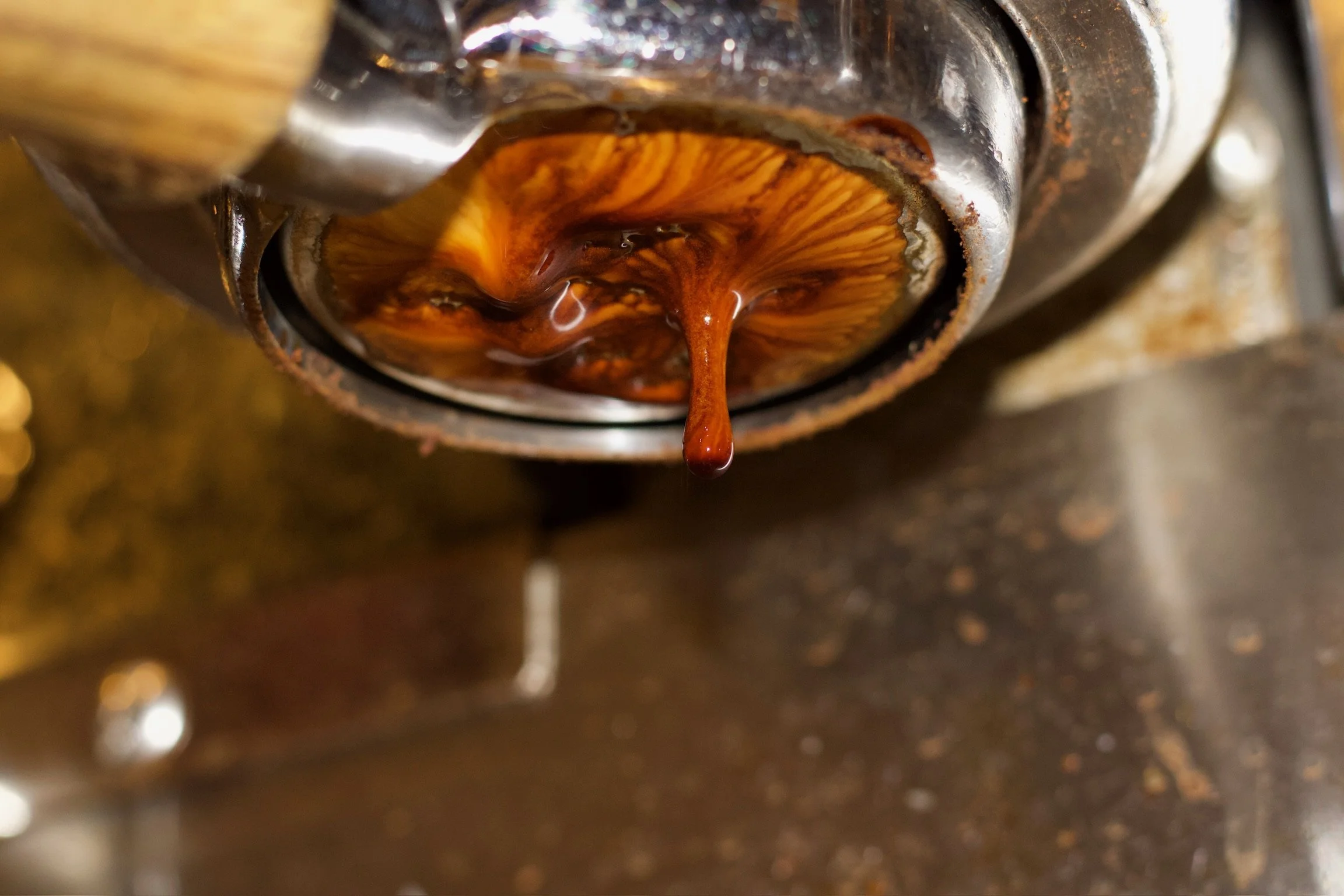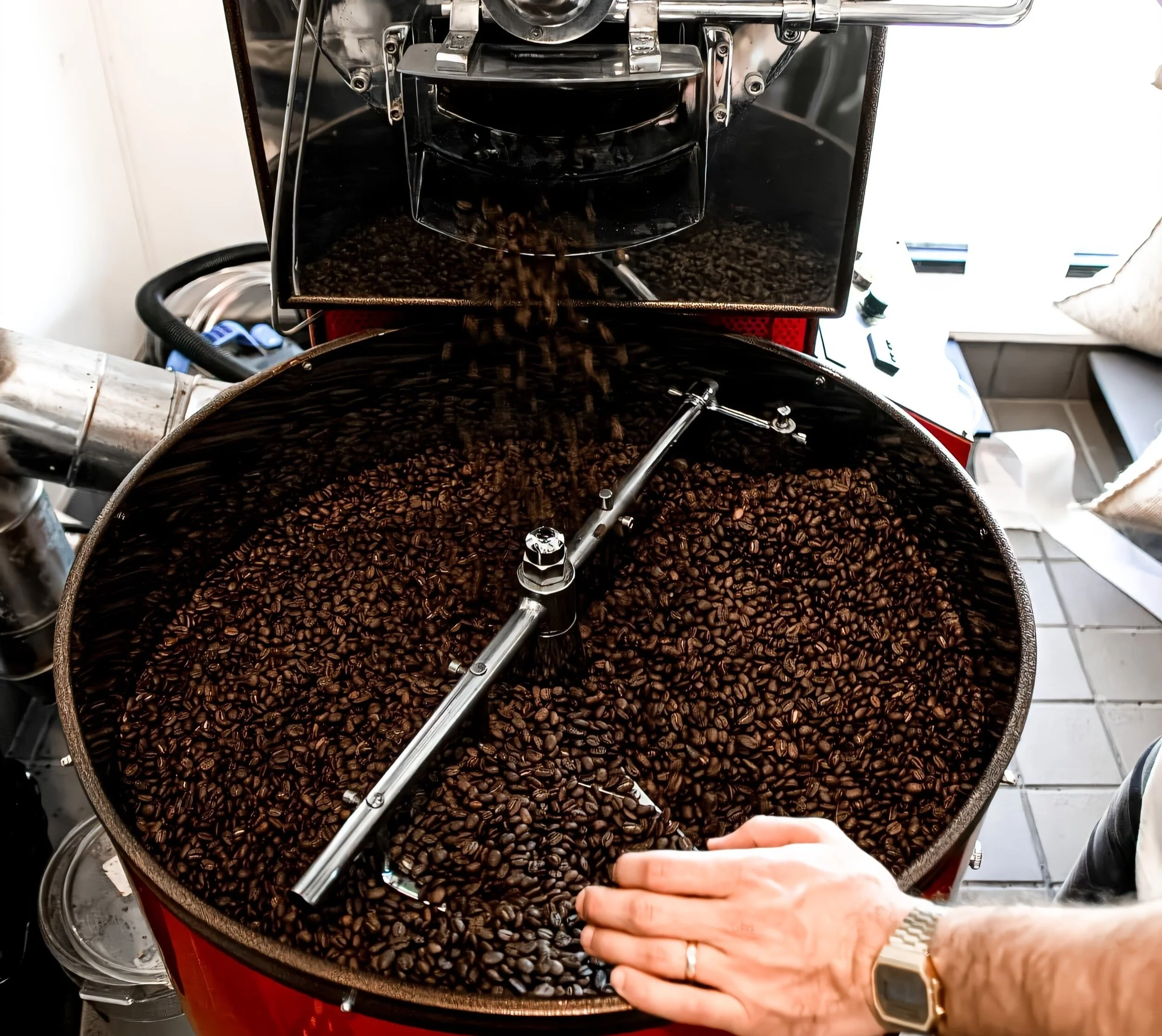The History of Third Wave Coffee in America
A beautiful Rosetta latte art design which is typically only found in 3rd Wave or Specilaty Coffee Shops.
Third wave coffee changed everything about how Americans drink their daily cup.
It flipped the script from simply “just get caffeine in me” to asking thoughtful questions like “what farm did this come from, and how was it roasted?”
Instead of treating coffee as a cheap, mass-produced commodity, the third wave movement brought flavor, craftsmanship, and specialty to the center of the coffee experience.
In this article we will explore the history of Third Wave Coffee in America.
So... What Is Third Wave Coffee?
Third wave coffee treats coffee like a craft beverage—similar to wine or craft beer.
It’s all about quality over quantity and focuses deeply on every step of the coffee’s journey, from farm to cup.
That means paying close attention to where the beans are grown, how they’re processed and roasted, and finally, how you prepare them.
The goal is simple: let the natural flavor of the coffee shine through.
Forget sugary drinks topped with whipped cream or heavy artificial flavors. Third wave coffee is about clean, well-roasted beans brewed to highlight their unique character.
Whether you’re sipping a bright, floral Ethiopian or a nutty Colombian, the coffee’s origin and treatment speak for themselves.
Let’s Back Up: The First and Second Waves
To understand why third wave coffee matters, we need to look at what came before it.
The first wave of coffee in America was all about convenience and affordability. Think of the Folgers era—instant coffee, cans of pre-ground blends, and drip machines in kitchens everywhere. People wanted a quick caffeine fix, and nobody really cared where the coffee beans came from or if they were freshly roasted.
Then came the second wave with the explosion of coffee shops like Starbucks and Peet’s. This era introduced espresso drinks, café culture, and a new appreciation for the coffee experience. Baristas became common fixtures, and people learned terms like “latte” and “macchiato.” But even then, coffee was still mostly about consistency and branding rather than bean origin or craftsmanship.
The Third Wave Starts Brewing
The early 2000s saw a new wave of roasters and coffee enthusiasts who wanted to do things differently. They pushed for more transparency and quality in every cup.
These pioneers sought to buy coffee beans directly from farmers to ensure fair pay and superior quality. They highlighted the unique flavors of each coffee-growing region and experimented with roasting techniques that preserved those delicate notes.
Suddenly, words like “altitude,” “processing method,” and “single origin” became part of coffee conversations. Roasters embraced lighter roasting to let natural flavors shine instead of hiding imperfections with dark, smoky flavors. Consumers were encouraged to slow down, learn how to brew better coffee at home, and appreciate the complexity in each cup.
Who Pushed the Movement Forward?
A handful of roasters played a huge role in shaping the third wave. Brands like Stumptown Coffee Roasters in Portland, Intelligentsia in Chicago, Blue Bottle Coffee in Oakland, and Counter Culture Coffee in North Carolina became the pioneers. They didn’t just sell coffee; they taught customers how to taste, evaluate, and care about what was in their cup.
Their cafés looked more like laboratories than typical coffee shops, offering tasting sessions and detailed information about each batch’s origin and flavor profile. Customers were introduced to coffees like Ethiopian Yirgacheffe or Guatemalan Huehuetenango—not just generic “medium roast.”
How It Changed Local Coffee Shops
Coffee shops have always been a huge space for community, and third wave coffee made that community deeper.
The third wave’s influence quickly spread beyond big cities to smaller towns and local roasters. Shops stopped buying generic dark blends and instead sourced traceable, single origin coffees. Pour-over brewing and other manual methods replaced giant drip machines, emphasizing control and precision.
Baristas started sharing stories about the farms and processing methods, and customers were encouraged to notice and enjoy the flavor differences. This culture shift brought a renewed respect for coffee as a specialty product.
At Refuge Coffee, we proudly embrace these values. We roast to highlight natural flavors and source beans that have a story worth telling. Coffee isn’t just a product to us—it’s an experience meant to be enjoyed slowly and thoughtfully.
What’s Next for Third Wave Coffee?
Roasting up a batch of third wave coffee at Refuge Coffee Roasters in Fairhope Alabama
The third wave coffee movement is still growing and evolving. Today, there’s a stronger focus on sustainability—ensuring farmers get fair pay and practice environmentally friendly farming methods.
Education continues to be important, with classes, tastings, and detailed blog content helping coffee drinkers understand the craft.
Technology is also playing a larger role.
Precision grinders, smart brewing devices, and apps that monitor water temperature and flow are becoming more common. Coffee drinkers today are more informed and curious than ever, and producers are adapting to meet these higher expectations.
Why It Matters
The Third Wave changed how we think about coffee. If you’ve ever asked “What’s the origin of this coffee?” or tried a pour-over, you’ve felt the ripple effect of the third wave.
It introduced a new way to experience coffee that has ultimately brought more people together.
Refuge Coffee Roasters - Third Wave Coffee Roasters
At Refuge Coffee, we source and roast with third-wave values in mind. All of our coffee is sourced at specialty grade, and roasted to taste.
Check out our full selection of single-origins and blends.
Suggested Article: How to Pick Coffee Beans



